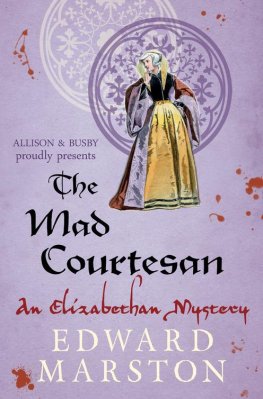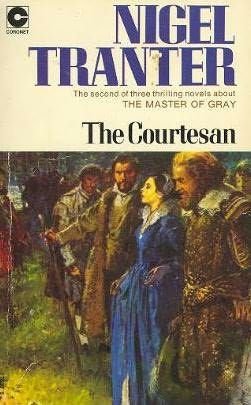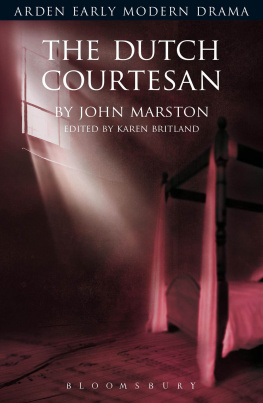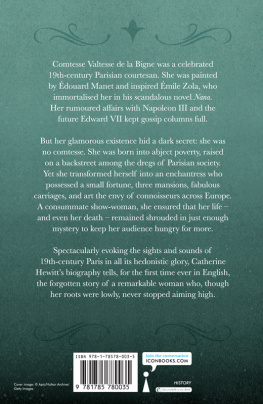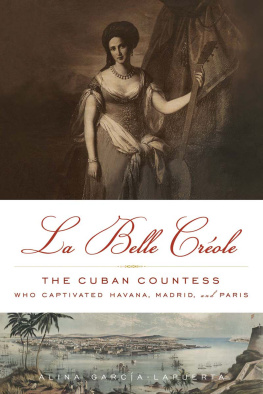Courtesan and Countess
Daguerreotype of Cleste in mens clothing (Archives Dpartementales de lIndre)
Courtesan and Countess
The Lost and Found Memoirs of the French Consuls Wife
Translated and annotated by Jana Verhoeven, Alan Willey and Jeanne Allen Introduction by Jana Verhoeven
MELBOURNE UNIVERSITY PUBLISHING
An imprint of Melbourne University Publishing Limited
11-15 Argyle Place South, Carlton, Victoria 3053, Australia
mup-info@unimelb.edu.au
www.mup.com.au
First published 2015
Text and translation Jana Verhoeven, Alan Willey and Jeanne Allen, 2015
Design and typography Melbourne University Publishing Limited, 2015
This book is copyright. Apart from any use permitted under the Copyright Act 1968 and subsequent amendments, no part may be reproduced, stored in a retrieval system or transmitted by any means or process whatsoever without the prior written permission of the publishers.
Every attempt has been made to locate the copyright holders for material quoted in this book. Any person or organisation that may have been overlooked or misattributed may contact the publisher.
Text design by Phil Campbell
Cover design by Phil Campbell
Typeset by J&M Typesetting
Printed in Australia by OPUS Group
National Library of Australia Cataloguing-in-Publication entry
Creator: Chabrillan, Cleste Vnard de, comtesse, 1824-1909, author.
Title: Courtesan and countess : the lost and found memoirs of the French consuls wife / translated and annotated by Jana Verhoeven, Alan Willey and Jeanne Allen.
ISBN: 9780522868838 (hardback)
ISBN: 9780522868845 (paperback)
ISBN: 9780522868852 (ebook)
Notes: Includes bibliographical references and index.
Subjects: Chabrillan, Cleste Vnard de, comtesse, 18241909.
Women authors, French19th centuryBiography.
CourtesansFranceBiography.
FranceHistory19th century.
FranceSocial life and customs19th century.
VictoriaHistory18511891.
VictoriaSocial life and customs18511891.
Other Creators/Contributors:
Verhoeven, Jana, 1972
Willey, Alan, 1932
Allen, Jeanne, 1957
843.8
Contents
Acknowledgements
We would like to thank, first and foremost, Franois and Brigitte Deshais, who graciously granted us access to Cleste de Chabrillans manuscript of her long-lost third set of memoirs. Thanks also to Diane Perelzsteijn for introducing us to the Deshais family. Christian Moreau and Franoise Laurent have been very supportive of our research, as has Valrie Baud, of the Archives Dpartmentales de lIndre, who provided many of the illustrations. Anne Huret, director of the former orphanage in Le Vsinet, graciously gave a tour of the premises and shared research with us. Our thanks also go to Dr Patricia Clancy, who, from the beginning of the project, has been most helpful with her counsel and advice. Staff at Melbourne University Publishing have assisted us in innumerable ways. Thanks go particularly to Sally Heath, Catherine McInnis and Cathy Smith.
Jana would like to thank the French Trust Fund of the University of Melbourne for providing travel funds. She would also like to express her deep gratitude to Professor Colin Nettelbeck for his longstanding support and mentorship. Thanks also to Professor Ivan Barko, who, as the editor of Explorations (now French Australian Review) has given much useful advice, as well as to Stefan. She is also grateful to Tim for his unstinting support throughout the long genesis of this book.
Inspired by a note in The French Consuls Wife, Alan started searching for the missing memoirs some fifteen years ago. Although he was not himself able to locate the precious documents, the quest itself was very instructive, rewarding and enjoyable. Along the way he encountered many men and women, too numerous to mention, who answered his enquiries with patience and interest. He would, however, like to make special mention of Andr Plat, honorary mayor of Le Poinonnet, who showed him the features of that charming town associated with the Countess, Marc du Pouget, director of the Archives Dpartmentales de lIndre, Jacques Tajan of the Etude Tajan, Gilbert Billiau, conservator of the Pr-Saint-Gervais cemetery, Catherine Bachelier, municipal librarian of Mzires-en-Brenne, Jean-Pierre Spitz, and Gabriel Michon. David Willey has been particularly supportive.
Jeanne is most grateful for the significant and ongoing support she has received since publishing, as co-author with Dr Patricia Clancy, The French Consuls Wife, Clestes second set of memoirs, in 1998. To those many kind readers who have urged Jeanne and Pat to pursue movie rights for these memoirs, particularly Max and Julia Allen, we assure you that we remain ever vigilant for opportunities! Jeannes thanks go also, and especially, to James, Christopher and Nicholas McLean.
Introduction
When, one afternoon in 1859, Cleste de Chabrillan leaves the French Foreign Ministry in great despair, she does not know that her struggles to survive are far from over. Her claim to a pension as the widow of the French Consul to Melbourne has been rejected by a high-ranking ministry official. She is being punished for the scandal she had caused in 1854 when she, courtesan and former streetwalker, had married an aristocrat. Almost twenty years earlier, Cleste Vnard had entered a high-class brothel as a registered prostitute in order to escape the advances of her mothers lover. Cleste soon worked her way up in the world of love for hire. She eventually left the brothel, gained fame under the name of La Mogador as a particularly supple dancer and daring circus rider and was able to attract a string of wealthy lovers. One of them, Lionel de Chabrillan, scion of one of the great noble families of France, could not let her go. After a passionate ten-year relationship, oscillating between tender love and violent altercation, they married in London in 1854, on their way to Australia. Lionel, financially ruined and with no prospects left in France, had obtained the post of consul to Melbourne. Unfortunately for both of them, before their decision to marry, Cleste had been persuaded to publish an account of her rise from poverty to courtesan fame. This autobiographical account, entitled Adieux au monde (Farewell to the World) had encountered enormous success when it was published in 1854, but had also caused a great scandal that reached as far as the Antipodes. As a result, Cleste found herself shunned by the polite society of Melbourne and lived in relative isolation in the bushland of St Kilda on the outskirts of Melbourne. She used this time, however, to educate herself and to write a novel set in the Victorian goldfields. Later, she would draw on her diary entries from that time to write a second autobiography in 1876, entitled Un deuil au bout du monde (Death in a Distant Land). The book presents a compelling and rather dark account of gold-rush Victoria at odds with most of the more celebratory Australian travelogues of the time. In 1856, after having spent two years in Melbourne, Cleste returned to Paris without Lionel. He had come to spend leave with her in France in early 1858 but returned alone to Melbourne about five months later. On the return journey, he contracted dysentery from drinking water in a bazaar in Aden and died in Melbourne on 29 December 1858. Cleste, left to fend for herself, was to live another fifty years.


